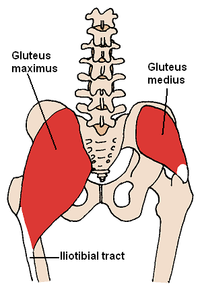
Photo from wikipedia
Introduction Anatomic repair of congenitally corrected transposition of great arteries (cc-TGA) has long held the promise of prevention of congestive heart failure by restoring the systemic ventricle function to the… Click to show full abstract
Introduction Anatomic repair of congenitally corrected transposition of great arteries (cc-TGA) has long held the promise of prevention of congestive heart failure by restoring the systemic ventricle function to the morphologic left ventricle. However data are limited and variable. We intended to perform a pooled analysis to try and delineate the outcomes after anatomic repair. Methods A comprehensive search of Medline and Scopus databases from inception through Dec 31, 2017 was conducted using predefined criteria. We included studies reporting anatomic repair of minimum 5 cc-TGA patients with a follow-up duration of 2 years or more. Meta-analysis was performed using Comprehensive meta-analysis v3.0 software. Random effects modelling was used because of observational nature of pooled data. Results In 21 eligible studies, 895 patients underwent anatomic repair with a pooled follow-up of 5457.2 person-years (PY). There was an even split between patients treated with the double switch operation and the atrial switch / ventricular re-routing operation. Pooled estimate for operative mortality was 8.3% (95% CI: 6.0-11.4%). 0.2% (CI: 0.1-0.4%) patients required ECMO/LVAD postoperatively and 1.7% (CI: 1.1-2.4%) developed post-operative AV block requiring a pacemaker. Patients surviving initial surgery had a transplant free survival of 92.5%(CI: 89.5-95.4%) per 100 PY and a low rate of need for pacemaker (0.5% / year; CI: 0.2-0.8%). 84.7% patients (CI: 79.6-89.9%) were found to be in NYHA functional class I or II after 100 PY follow up. Total re-intervention rate was 5.3% per year (CI: 3.8-6.8%). Incidence of baffle stenosis, AV valve dysfunction, neo-aortic insufficiency and LVOT obstruction were estimated at 1.1% (CI: 0.8-1.5%); 0.3% (CI: 0.2-0.5%); 0.5% (CI: 0.2-0.9%) and 0.4% (CI: 0.1-0.6%) per year. Rate of development of LV dysfunction was 1.7%/ year (CI: 1.0-2.4%). Conclusions Despite a relatively high operative mortality, our study provides favorable updated estimates for follow-up outcomes after anatomic repair for cc-TGA patients. The pooled data suggests need for active monitoring over the long term for important complications including heart block and worsening ventricular dysfunction despite majority of patients being in NYHA class I/II.
Journal Title: Journal of Cardiac Failure
Year Published: 2018
Link to full text (if available)
Share on Social Media: Sign Up to like & get
recommendations!